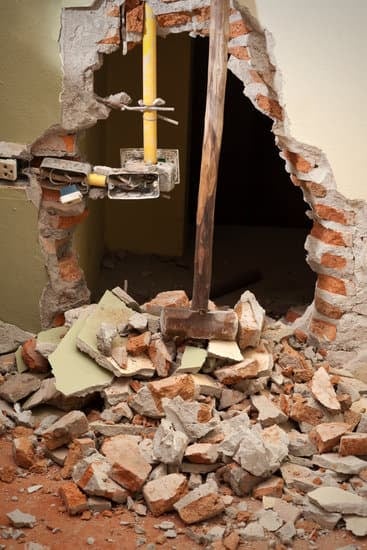Is it easy to get a home improvement loan? Home improvement loans are an essential financial tool for homeowners looking to enhance their living spaces, increase property value, or address necessary repairs and renovations. Investing in home renovation projects not only improves the aesthetics and functionality of a property but can also potentially lead to a higher return on investment in the future.
When considering a home improvement loan, borrowers have various options to choose from, including personal loans, home equity loans, and government-insured loans. Each type of loan offers its own set of advantages and considerations, depending on the borrower’s financial situation and preferences. Understanding the differences between these loan types can help individuals make informed decisions when planning for their home improvement projects.
While many individuals may be interested in applying for a home improvement loan, it is crucial to understand the eligibility criteria that lenders typically look for in borrowers. Factors such as credit score, income level, employment stability, and debt-to-income ratio play a significant role in determining whether an individual qualifies for a loan and at what interest rate.
By familiarizing themselves with these requirements, prospective borrowers can better prepare themselves for the application process and increase their chances of approval.
Types of Home Improvement Loans
When considering a home improvement project, one of the most critical aspects is determining the best way to finance it. There are various options available to homeowners looking to fund their renovation endeavors, each with its own set of advantages and considerations. One common choice is a personal loan, which is typically unsecured and based on your creditworthiness. This type of loan can be convenient for smaller projects that don’t require a significant amount of funding.
Another popular option is a home equity loan, which allows homeowners to borrow against the equity in their property. This type of loan often comes with lower interest rates compared to personal loans because it’s secured by the value of the home. However, it’s essential to remember that failure to repay a home equity loan could result in losing your home through foreclosure, so careful consideration is necessary.
Government-insured loans, such as FHA 203(k) loans or VA renovation loans, are also available for specific types of home improvement projects. These loans often come with favorable terms and may be easier to qualify for than traditional financing options. They can provide an excellent opportunity for homeowners who need financial assistance but might not meet the stringent requirements of conventional lenders. Ultimately, choosing the right type of home improvement loan will depend on your individual circumstances and needs.
| Loan Type | Key Features |
|---|---|
| Personal Loan | Unsecured; based on creditworthiness |
| Home Equity Loan | Borrow against home equity; lower interest rates |
| Government-Insured Loans | Favorable terms; easier to qualify for |
Eligibility Criteria
When considering applying for a home improvement loan, it is essential to understand the eligibility criteria that lenders typically assess to determine if you qualify for the loan. Meeting these requirements can increase your chances of getting approved for the loan you need to finance your renovation project.
Credit Score
One of the key factors that lenders consider when evaluating a borrower’s eligibility for a home improvement loan is their credit score. A higher credit score typically indicates a lower risk for lenders, making it easier to secure financing at favorable terms. Lenders often look for a minimum credit score threshold, so it is important to review and improve your credit score before applying for a home improvement loan.
Income and Employment History
Lenders also assess the applicant’s income and employment history to ensure they have a stable source of income to repay the loan. Providing proof of steady employment and sufficient income can strengthen your application for a home improvement loan. Additionally, having a reliable income stream increases your chances of getting approved for the amount you need to fund your renovation project.
Debt-to-Income Ratio
Another critical factor in determining eligibility for a home improvement loan is the debt-to-income ratio. Lenders compare the borrower’s monthly debt payments to their gross monthly income to gauge their ability to take on additional debt responsibly.
Keeping your debt-to-income ratio low by paying down existing debts can enhance your eligibility and make it easier to get approved for a home improvement loan. Understanding and addressing these key eligibility criteria can help streamline the application process and improve your chances of securing the financing needed to upgrade your home.
Application Process
When considering a home improvement project, one of the crucial steps is securing the necessary finances to fund the renovations. Home improvement loans offer a convenient solution for homeowners looking to upgrade their living spaces without draining their savings. However, understanding the application process is key to successfully obtaining a home improvement loan. Below is a breakdown of the steps involved in applying for such a loan:
- Research Loan Options: The first step in the application process is to research and compare different types of home improvement loans available. Whether you opt for a personal loan, a home equity loan, or a government-insured loan will depend on your financial situation and preferences.
- Gather Documentation: Once you have chosen a suitable loan option, the next step is to gather the necessary documentation required by lenders. This may include proof of income, tax returns, bank statements, and information about the planned renovation project.
- Submit an Application: After compiling all the required documents, you can move forward with submitting an application for a home improvement loan. This process typically involves filling out an application form and providing details about your financial history and the renovation project.
Navigating through the application process is it easy to get a home improvement loan does require some effort and organization; however, with careful planning and attention to detail, securing financing for your home renovation project can be a straightforward process.
Don’t get discouraged by the paperwork involved in applying for a home improvement loan; instead, consider it as a necessary step towards achieving your dream renovation project. By following these steps diligently and providing accurate information to lenders, you can enhance your chances of getting approved for the loan needed to transform your living space.
Factors Affecting Approval
When it comes to applying for a home improvement loan, several factors come into play that may impact your approval chances. One of the most critical elements is your credit score. Lenders use this three-digit number to assess your creditworthiness, with higher scores indicating lower risk for the lender.
Typically, a good credit score (around 670 or above) can increase the likelihood of approval for a home improvement loan. On the other hand, a lower credit score may result in higher interest rates or even rejection of your loan application.
Another key factor that lenders consider is your income level. Your income helps demonstrate your ability to repay the loan amount along with any existing debts you may have. A stable and sufficient income can reassure lenders that you will be able to make timely payments on the home improvement loan. Additionally, having a steady income stream increases your chances of getting approved for a more substantial loan amount if needed for extensive renovation projects.
Debt-to-income ratio (DTI) is another crucial aspect that lenders look at when evaluating loan applications. Your DTI ratio is calculated by dividing your total monthly debt payments by your gross monthly income. Lenders prefer applicants with lower DTI ratios as it shows a healthy balance between debt obligations and income levels. Maintaining a low DTI ratio indicates to lenders that you have enough disposable income to cover additional monthly payments on a home improvement loan without financial strain.
| Key Factors | Impact on Approval |
|---|---|
| Credit Score | Higher scores lead to higher approval chances |
| Income Level | Adequate income boosts approval likelihood |
| Debt-to-Income Ratio (DTI) | Lower DTI ratios are favorable for approval |
Pros and Cons
Home improvement loans offer homeowners a valuable opportunity to enhance their living spaces, increase property value, and address necessary repairs or renovations. One of the advantages of securing a home improvement loan is the ability to access funds specifically designated for these purposes, without having to dip into personal savings or use high-interest credit cards.
By obtaining a home improvement loan, individuals can tackle projects they might not have been able to afford otherwise, ultimately improving the quality of their homes.
However, it is essential to consider the potential drawbacks of taking out a home improvement loan. One disadvantage is the added financial burden of repaying the loan amount over time, which includes interest and fees.
Borrowers need to carefully assess their ability to make monthly payments and ensure that taking on additional debt aligns with their current financial situation. Additionally, some home improvement loans may require collateral, such as equity in the property, putting homeowners at risk of losing their assets if they default on the loan.
When contemplating whether to apply for a home improvement loan, individuals should weigh both the advantages and disadvantages carefully. Consideration must be given to factors such as interest rates, repayment terms, and overall financial stability.
By evaluating these aspects thoroughly and comparing different loan options available in the market, borrowers can make an informed decision about whether pursuing a home improvement loan is the right choice for them. Ultimately, understanding that while it is easy to get a home improvement loan with favorable terms requires careful consideration of one’s individual circumstances before committing to this financial obligation.
Tips for Getting Approved
Improving your credit score, reducing debt, and selecting the right loan option are crucial steps in increasing your chances of getting approved for a home improvement loan. Lenders consider these factors to determine your creditworthiness and ability to repay the borrowed funds. By following some practical advice, you can enhance your financial profile and improve your odds of securing the necessary financing for your home renovation projects.
Improving Credit Score
One of the key factors that lenders evaluate when considering a loan application is the applicant’s credit score. A higher credit score indicates better financial responsibility and makes you a more attractive borrower.
To boost your credit score, focus on making timely payments on existing debts, keeping credit card balances low, and avoiding opening new lines of credit unnecessarily. Additionally, regularly checking your credit report for errors and disputing any inaccuracies can also help improve your credit score over time.
Reducing Debt
Another essential step in preparing for a home improvement loan is reducing existing debt levels. Lenders analyze your debt-to-income ratio to assess your ability to take on additional debt responsibly.
Paying down outstanding debts, such as credit card balances or personal loans, demonstrates financial stability and reduces the risk for lenders. Consider creating a budget to allocate extra funds towards debt repayment each month and prioritize high-interest debts first to save money on interest payments in the long run.
Choosing the Right Loan Option
When seeking a home improvement loan, it’s crucial to explore different loan options available to find the best fit for your financial situation. Personal loans offer flexibility but may come with higher interest rates than other secured loans like home equity loans or government-insured loans.
Evaluate each option based on interest rates, repayment terms, and potential fees to select the most cost-effective solution for your needs. Additionally, consider consulting with a financial advisor or loan officer to discuss which loan option aligns best with your goals and financial capabilities.
By implementing these tips for improving credit score, reducing debt, and choosing the right loan option wisely is vital before applying for a home improvement loan. These proactive steps can increase your likelihood of approval and secure favorable terms, ultimately allowing you to finance your renovation projects successfully. Remember that thorough preparation is key in navigating the loan approval process smoothly.
Conclusion
In conclusion, obtaining a home improvement loan can be a viable option for homeowners looking to invest in their properties and increase their value. The benefits of such loans include the ability to finance renovation projects without tapping into savings or emergency funds, potentially increasing the overall worth of the property.
With various types of home improvement loans available, such as personal loans, home equity loans, and government-insured loans, borrowers have options to choose from based on their financial situation and needs.
When considering if it is easy to get a home improvement loan, it ultimately depends on several factors. Lenders typically assess eligibility criteria such as credit score, income levels, and debt-to-income ratio when reviewing loan applications.
By understanding these requirements and taking proactive steps to improve financial health, individuals can increase their chances of approval for a home improvement loan. While the process may involve gathering documentation and navigating through the application process, with careful planning and preparation, obtaining a home improvement loan is achievable.
In summary, while getting approved for a home improvement loan may not always be a walk in the park, it is certainly possible with the right approach. By educating oneself on the available loan options, meeting eligibility criteria set by lenders, and making conscious efforts to strengthen one’s financial profile, securing financing for renovation projects becomes more feasible. Ultimately, investing in improving your property can yield long-term benefits both aesthetically and financially.
Frequently Asked Questions
What Credit Score Is Needed for a Home Improvement Loan?
The credit score needed for a home improvement loan typically varies depending on the lender, but generally, a FICO score of 620 or higher is recommended. A higher credit score may qualify you for better interest rates and loan terms.
What Is the Average Length of a Home Improvement Loan?
The average length of a home improvement loan commonly ranges from 5 to 20 years, with some lenders offering shorter or longer terms based on the borrower’s needs. Choosing the right term length is crucial to ensure manageable monthly payments.
Are Renovation Loans a Good Idea?
Renovation loans can be a good idea for homeowners looking to upgrade their property without draining their savings or using high-interest credit cards. They provide a way to fund home improvements while spreading out the costs over time with reasonable interest rates.
However, it’s essential to carefully consider your financial situation and evaluate if taking on additional debt makes sense in your circumstances.

I’m thrilled to have you here as a part of the Remodeling Top community. This is where my journey as an architect and remodeling enthusiast intersects with your passion for transforming houses into dream homes.





